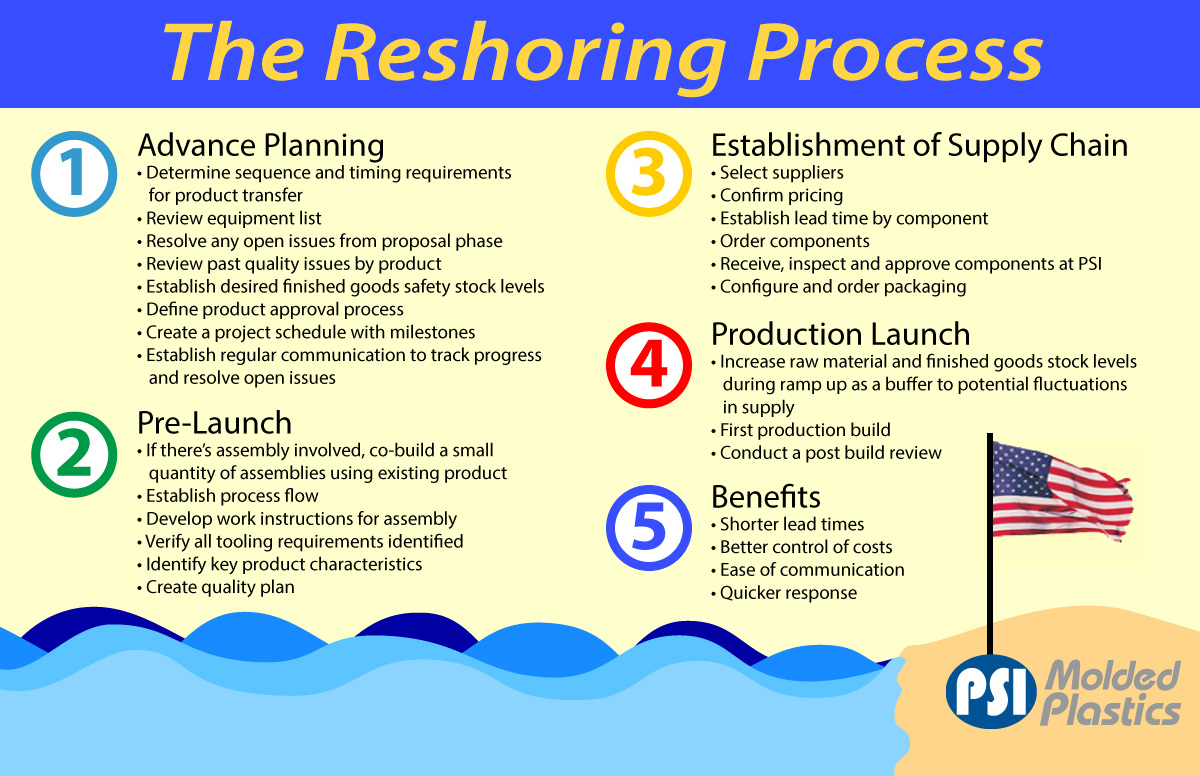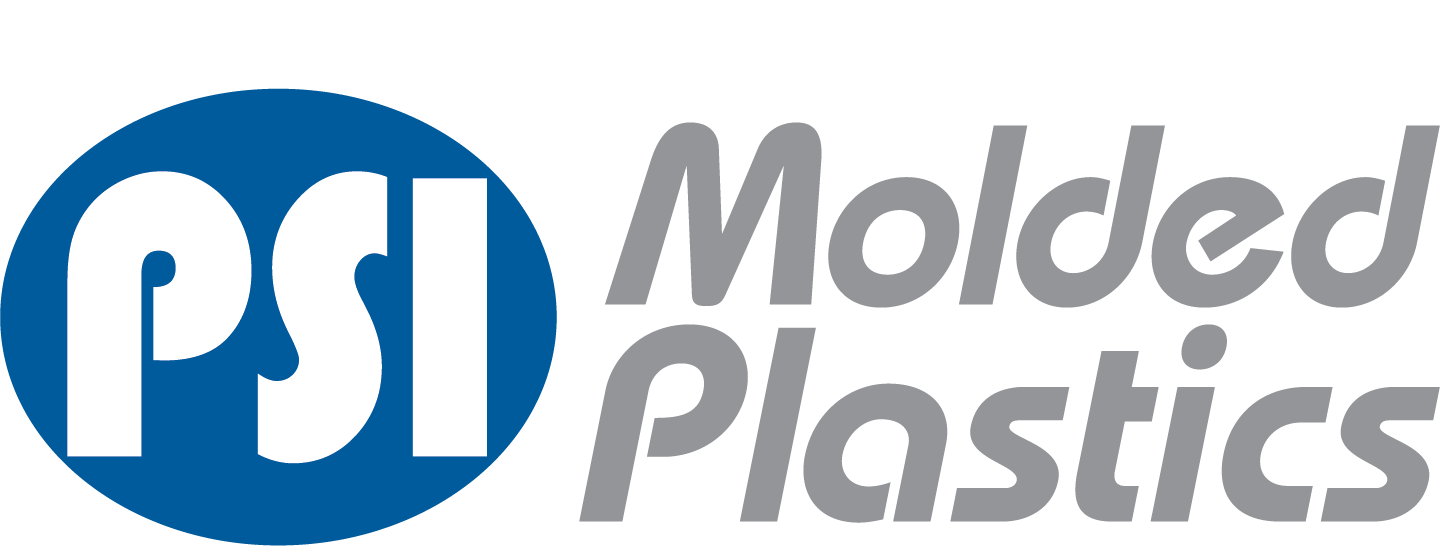PSI Molded Plastics
Reshoring Manufacturing Information

What Is Reshoring?
Reshoring—also known as onshoring—refers to the practice of moving manufacturing operations from foreign soil back to the United States. Reshoring may also refer to the practice of outsourcing to domestic contract manufacturers rather than overseas. As the cost benefits of offshoring fade away, more American-based manufacturers are seeing the benefits of domestic production.
Domestic manufacturing has several financial and logistical advantages and reshoring has seen a resurgence in popularity in the manufacturing world.
- Labor costs are rising in China manufacturing fostered by their economic development and transition to support domestic markets.
- U.S. Tariffs have been placed on imported products.
- COVID-19 is the most recent health crisis to disrupt product being imported to the U.S.
BENEFITS OF RESHORING
- Shorter lead time results in reduced inventory and improved responsiveness to market needs.
- Better control of cost elements, especially labor costs, transportation and government (duties and tariffs).
- Availability of materials commonly used in the U.S.
- Ease of communication.
• Same or close time zone
• Language barriers
• Ease of in-person meetings (one trip to China takes a week out of one's schedule and erases a lot of unit price savings)
- Improved protection of intellectual property.
- Quicker response on quality and / or engineering needs.
THINGS TO CONSIDER WHEN TRANSFERRING A PROGRAM
- Do you have current part drawings, CAD files and tool designs that you can share with the molder?
- Is the domestic molder a good fit (molding and post molding capabilities, markets they support, overall size compared to your needs)?
- What are your tool and process qualification requirements?
- Do you have a detailed list of tooling that will be transferred?
• Molds with construction detail (cavitation, gating, runner system, action…etc.)
• Secondary tooling (cooling fixtures, trim fixtures, check fixtures, decorating)
- Development of a schedule for transfer and qualification.
- Building a bank of product to support you through the transfer and qualification process.
- Setting up with your supplier a transfer team that will work together to successfully transfer the tooling and qualify production.
WHY PSI
- PSI Molded Plastics has multiple facilities, each with many years of experience in transferring both low and high volume programs.
- With a press range from 22-2100 tons and post molding capabilities we can handle most product requirements.
- A PSI transfer team, led by a project manager, works closely with the customer to handle each element of the transfer including commercial items, positioning raw materials, developing qualification plans, receiving and inspecting tooling and launching the program to support our customer's needs and schedule.
